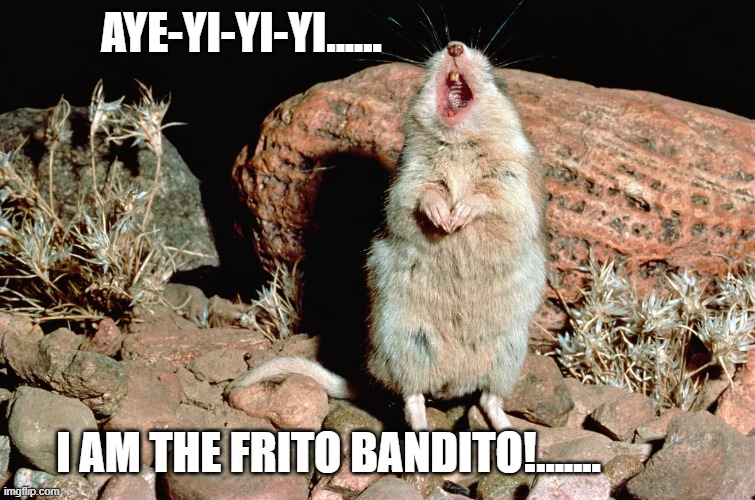
Posted on 10/01/2025 1:11:47 PM PDT by Red Badger
They might be small but grasshopper mice are top level carnivores.

AWWWWOOOOOO!
Image Credit: Minden Pictures/Alamy
You might think that only werewolves howl at the Moon, but this spooky season, we’re bringing you another creature with a lot to say at nighttime. Meet the grasshopper mouse; it might be small, but it has one heck of a voice.
There are three species of grasshopper mouse that are closely related to deer mice: the northern grasshopper mouse (Onychomys leucogaster), the southern grasshopper mouse (O. torridus), and Mearns’ grasshopper mouse (O. arenicola).
The southern grasshopper mouse is found in northern Mexico and the southwest of the United States, including the Sonoran Desert. It measures roughly 15 centimeters (5.9 inches) from the tip of its nose to its tail and weighs somewhere between 20-50 grams (>0.1 pounds). Oh, and it howls like a wolf.
VIDEOS AT LINK.................
Despite being literally mouse-sized, these diminutive little rodents are actually top-level carnivores and voracious predators and will attack pretty much anything smaller than they are for food. While they have been recorded eating some plant material, the majority of their diet is grasshoppers, scorpions, and other arthropods. Their Latin name, Onychomys, means “clawed mouse” as their paws and even fingernails are specially adapted to hold onto slippery, struggling prey. Compared to deer mice, they even have a stronger bite force for killing their dinner.
The Sonoran Desert is home to more venomous creatures than anywhere else in the United States. One of these species is the Arizona bark scorpion, which is highly venomous and can be fatal to humans. The grasshopper mouse survives because it has a special method of shutting down the pain signal to the brain when the venom is ingested, using sodium channels.
As well as its venom-defying skills, the grasshopper mouse is actually famous for howling at the Moon. Both males and females stand on their hind legs, point their noses in the air, and let out a very high-pitched noise in the range of 9-14 Hertz that can be heard for 100 meters (330 feet). Often, the howl precedes a kill, and though its function is not known for sure, it is thought to be a way for the mouse to mark its territory.
The howl is produced in the same way wolves howl – and humans speak – too. A 2017 study found that they produce two types of vocalizations. One is a classic whistle-like mechanism used by other rodents and the other is a unique tissue vibration induced by airflow, like humans and wolves.
I had my phone on full blast when I played the vid. You’re lucky you couldn’t hear it although you may be subject to an ASPCA visit for what it must have done to your poor dogs. I almost dropped my phone and ran.
I wonder if Ozzy ever heard of this.

Muad’dib!
The spice must flow.
Freegards
😁........................

There's a lil dig between firearm mfg's. CZ makes the very popular "Scorpion" PDW.
B&T make the GHM9 to compete with it. There's a laser engraved image of the scorpion eating Grasshopper Mouse on the GHM9.

Clapping joyfully. Can almost hear him.
Can this mouse bark at the moon, same as lunatics and dogs do?
No, Hz means 1 Hertz. The closest thing I can guess to what you’re saying is that “m” means “milli-” and “M” means “Mega-,” but I can’t imagine anyone would ever refer to milliHertz, since that would be one “vibration” every 1,000 seconds, which wouldn’t be much of a vibration.
Disclaimer: Opinions posted on Free Republic are those of the individual posters and do not necessarily represent the opinion of Free Republic or its management. All materials posted herein are protected by copyright law and the exemption for fair use of copyrighted works.